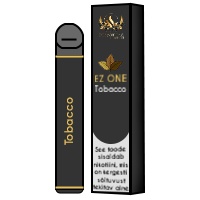Popcorn Lung: Separating Myth From Science

In recent years, countless headlines linking vaping to popcorn lung surfaced across the media. But what does scientific evidence tell us? Is there a really a connection between the two?
Popcorn Lung, a condition which is formally known as bronchiolitis obliterans, is an irreversible disease which narrows the bronchioles (i.e. the lungs’ smallest airways), by causing inflammation and subsequent scar tissue. The rare condition obtained its informal name from the fact that in the early 2000s many microwave popcorn plant workers were diagnosed with the condition.
Associated with a number of medical and environmental factors, the disorder is commonly found in lung transplant recipients, as well as in individuals who are likely to inhale toxic chemicals in their line of work. Despite not a single case ever being caused by vaping, in recent years news media have frequently conjectured that vaping causes the serious condition. And this conclusion was derived from the cause of the condition.
The early vaping products which contained diacetyl at an average of nine micrograms per cartridge, did so in much smaller amounts than is currently found in cigarettes. Hence if a chain smoker has never suffered from the popcorn lung, as is the case, there is no way that a vaper could!
The reason why microwave popcorn plant workers suffered from Bronchiolitis Obliterans was the inhalation of the flavour additive diacetyl, the most prominent chemical in the butter flavour. And the link with vaping originated from the fact that some of the first vaping products which arrived on the scene, contained diacetyl as well.
A 2014 study was the first paper which brought this potential risk to light, by finding the chemical in nearly 70% of 160 products it tested. This paper was followed by a 2015 study which found diacetyl in 39 of the 51 vape flavours tested. Naturally, these findings led to immediate and widespread panic concern among health authorities, and other stakeholders.
In response to this concern, most manufacturers stopped using diacetyl as a flavouring agent, and later studies found that very little to none of the products contained diacetyl after 2018.
There has never been a case of popcorn lung caused by vaping

Meanwhile, several health bodies, including Health Canada, the New Zealand Ministry of Health, and the UK Health Security Agency, have clarified that there is no evidence linking vaping to popcorn lung.
Moreover, data has shown that even if one had to consider the early vaping products which contained diacetyl at an average of 9 micrograms per cartridge, they did so in much smaller amounts than is found in cigarettes, which contain approximately 336 micrograms of diacetyl per cigarette. Hence if a chain smoker has never suffered from the condition, as is the case, there is no way that a vaper could!
More importantly, there has never been a known case of the condition caused by vaping. This was reiterated by public health expert Dr. Michael Siegel who wrote, “despite the presence of electronic cigarettes on the U.S. market for 13 years and despite the fact that there are literally millions of vapers, there has never been a confirmed case of popcorn lung occurring in a vaper.”
Siegel had highlighted that the annual incidence of popcorn lung amongst vapers between 2007 and 2018 was 0.0 per 100,000. While the current prevalence of popcorn lung among current (past month) vapers (as of the end of 2018) was still 0.0%.
A recent episode of The Studies Show restated that while the long-term health impacts of vaping continue to be studied, available evidence suggests that concerns about popcorn lung as a consequence of vaping are not substantiated.
Improved lung health when switching from smoking to vaping
Meanwhile science has consistently shown that switching from smoking to vaping is beneficial to lung health. Vaping eliminates the combustion process responsible for producing harmful tar and many toxic chemicals found in traditional cigarette smoke. As a result, individuals who make the switch immediately experience improved lung function, reduced coughing, and less production of mucus.
























